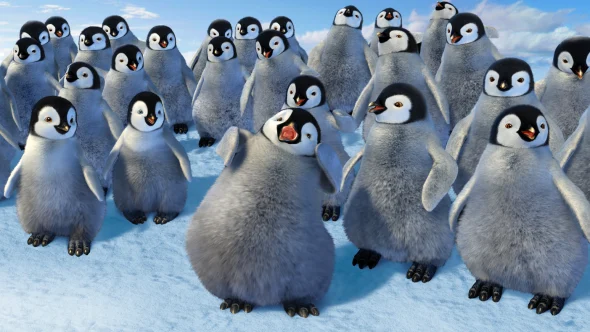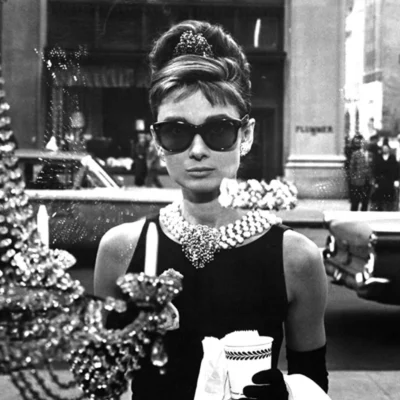
When George Miller's feature directorial debut — a low-budget car-chase thriller called Mad Max — debuted in the spring of 1979, the then-34-year-old Aussie filmmaker probably seemed like an unlikely bet to become a world-renowned auteur. Although Miller had enjoyed making and collaborating on short films for years by that point, he also attended medical school and was a practicing doctor for most of the 1970s. But while working in a Sydney emergency room (and seeing all manner of car-related injuries), Miller hatched the idea for Mad Max, and the rest is history.
In the four decades since, Miller has written, produced, and/or directed more than a dozen other films, launched two successful franchises and won an Oscar (for Best Animated Feature Film with 2007's Happy Feet).
After a seven-year hiatus, Miller is back with Three Thousand Years of Longing, starring Tilda Swinton as a scholar traveling in Istanbul, and Idris Elba as a djinn who offers her three wishes in exchange for his freedom. While we’re all longing for that August release, the waiting period is a perfect opportunity to brush up on — and celebrate — the wonderful twists and turns of Miller's career up to this point.

When Miller first conceived of Mad Max, he thought of it as "a silent movie with sound," and the resulting movie remained close to that vision. Mel Gibson, in the role that made him a star, plays Max Rockatansky, a highway patrol officer in a dystopian, near-future Australia, where society has mostly crumbled. After Max finds himself in conflict with a biker gang, his wife and child are killed, and it's time for revenge.
There's very little dialogue in Mad Max, which lets the desolate landscapes and intense chase sequences speak for themselves, and the result connected with audiences around the world to the tune of a massive (for the time) $100 million gross. In fact, that gross, weighed against the film's tiny budget, actually earned Mad Max the distinction of "Most Profitable Film," according to the Guinness Book of World Records.

Although the first Mad Max movie is technically set in a vaguely post-apocalyptic future, it adhered to a reality that closely mirrored our own. Not so with The Road Warrior, which reimagined the future as a desolate wasteland, sparsely populated by savage villains decked out in post-punk leather armor and driving imaginative murder vehicles. Mel Gibson returned as the titular Max, this time a loner mercenary helping a small enclave of people protect their precious fuel reserves from the marauding clans surrounding them. The film's final act — a prolonged car chase as Max tries to transport a fuel tanker to a safer location across the desert — remains one of the most exhilarating set pieces in the history of action cinema, and it helped cement The Road Warrior’s place as a visceral and influential classic.

Four filmmakers — George Miller, Steven Spielberg, John Landis and Joe Dante — each directed a segment of this anthology film, which together honored the different types of stories from Rod Serling’s classic original television series of the same name. The Twilight Zone: The Movie is mostly remembered in infamy because of a tragic accident on set that killed Vic Morrow and two child actors during the filming of John Landis' segment; years of lawsuits ensued, and nearly everyone involved with the film is reluctant to discuss it.
But Miller's segment, a remake of the episode "Nightmare at 20,000 Feet" starring John Lithgow as an airplane passenger who believes he sees a creature on the wing of the plane destroying one of the engines, is a fantastically claustrophobic little piece of panic cinema that wonderfully embodies the enduring power of the source material.

For the third installment in the franchise, Mel Gibson was joined by Tina Turner (who reportedly turned down a starring role in Steven Spielberg's film adaptation of The Color Purple to take the part) as Aunty Entity, the ruthless leader of a place called Bartertown. After an arrangement between Max and Aunty Entity goes south, she exiles him to the unforgiving desert, where he's eventually found by a group of children who've survived in an oasis without adult supervision. But when the children end up in a conflict with Bartertown, Max is once again thrust into the role of reluctant hero.
Mad Max Beyond Thunderdome changed the formula of the series, minimizing the pure action in favor of more exposition and moral ambiguity. Turner also recorded a GRAMMY-winning song for the film, "We Don’t Need Another Hero (Thunderdome)," which became one of her signature classics.
Three small-town single women — played by Susan Sarandon, Michelle Pfeiffer and Cher — aren't aware of their conjuring power when they discuss their ideal man, and the next morning he suddenly arrives in town in the form of a devilishly charismatic Jack Nicholson. But all is not as it seems, and this dreamboat seductor becomes the embodiment of that old adage, Be careful what you wish for.
The Witches of Eastwick was adapted by screenwriter Michael Cristofer from the eponymous John Updike novel, and it's the only solo feature film Miller directed without also writing. But that didn’t affect Miller's hot streak. With a score by John Williams and cinematography by the great Vilmos Zsigmond, The Witches of Eastwick became yet another box office hit for the director.

After more than a decade of writing and directing films defined by their fantastical and/or sci-fi qualities, Miller returned to his roots in medicine for this true story of a young boy with a mysterious disease. Nick Nolte and Susan Sarandon play Augusto and Michaela Odone, the parents of Lorenzo, who is afflicted with a rare disease called Adrenoleukodystrophy. Through intense research and indomitable will, Lorenzo's parents help spearhead the development of a new treatment for ALD — the titular Lorenzo's oil — and shock the medical community.
Although Lorenzo's Oil became Miller’s first box office disappointment, this sensitive family drama was a critical hit, earning Sarandon an Oscar nomination for Best Actress and Miller his first Oscar nomination for Best Original Screenplay (shared with co-writer Nick Enright).

Miller didn't direct Babe (that honor fell to Chris Noonan), but he did write and produce the film, and considering Miller received Oscar nominations for both of those roles, Babe earns its spot as an essential entry on a list of Miller's filmography. This beloved Best Picture nominee tells the story of an adorable pig on an Australian farm who learns to herd like a sheepdog, and James Cromwell received a Best Supporting Actor nomination for his role as farmer Hoggett, the man who dared to enter a pig into the local sheepherding competition.
Babe received seven Oscar nominations (including a win for Best Visual Effects), and this wonderfully endearing and adorable movie melted hearts around the world to the tune of an eye-popping $250 million at the global box office. That'll do, pig. That'll do.
You can’t make a massively successful all-ages film without giving the people what they want: a sequel. Although the first Babe movie was faithfully adapted from the Dick King-Smith novel The Sheep-Pig, Miller and his co-writers, Judy Morris and Mark Lamprell, developed the concept for this follow-up themselves: Mrs. Hoggett takes Babe to the city to compete in a regional sheepherding contest with a big payout in order to save the farm. Once in the city (which in this case is a fantastical hybrid metropolis), Babe is secretly abducted from his hotel and ends up on an adventure with other wayward animals. Babe: Pig in the City is a darker film than its predecessor, but it earned an Oscar nomination for Randy Newman's theme song, "That'll Do," performed by Peter Gabriel.

While developing Mad Max: Fury Road, Miller hit upon an idea for another all-ages animal film, this time about a penguin who finds his voice by, well, not using his voice. In the computer-animated world of Happy Feet, penguins primarily express themselves (and find mates) through song. But after the young penguin Mumble hatches without the ability to sing, he quickly discovers he can tap dance up a storm, and his enthusiasm for this bizarre skill — which is initially greeted with suspicion by the rest of his colony — eventually wins over his friends and family.
Happy Feet features voice work by Hugh Jackman, Robin Williams, Nicole Kidman, Elijah Wood, Hugo Weaving and Brittany Murphy, with an original song by Prince. The movie won Best Animated Feature at the 79th Oscars and inspired a sequel, 2011's Happy Feet Two.

After decades of development and numerous production delays, Miller's long-awaited fourth Mad Max film was unleashed at the 2015 Cannes Film Festival, where critics immediately hailed it as a masterpiece. Tom Hardy assumes the role of Max and Charlize Theron co-stars as Furiosa (a character with a prequel film currently in production), as the two are thrust into what is essentially a feature-length chase scene filmed in the unforgiving desert of Namibia.
Fury Road managed to combine the visceral visual style of The Road Warrior and the more allegorical story elements of Beyond Thunderdome, while managing to top both in terms of energy, craft and resonance. The result? The film earned 10 Oscar nominations, including Best Picture and Best Director, and won six. (Best Costume Design, Film Editing, Makeup and Hairstyling, Production Design, Sound Editing and Sound Mixing)
In the years since its release, Mad Max: Fury Road been frequently cited as one of the greatest action films ever made.





